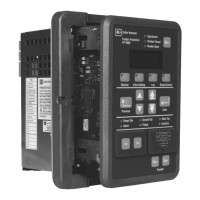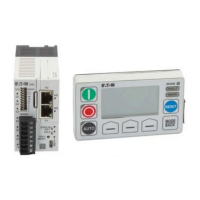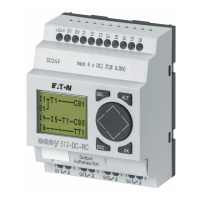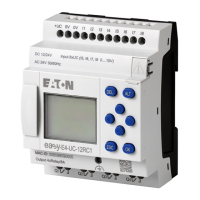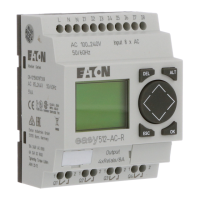Page 8 I.L. 17562
PR 0.3 Effective 8/99
The relay samples the current waveforms 36 times per cycle providing accurate measurements
of the positive and negative sequence currents, as well as harmonic components which add to
rotor and stator heating. The negative sequence component of current causes far greater heating
effect on the rotor and has a greater impact on the thermal model in the relay, as compared to
the balanced or positive-sequence component.
2.1.2 Instantaneous Overcurrent Protection
The MP-3000 has instantaneous phase overcurrent function to trip the motor for fault currents,
sometimes saving the fuses for medium-current faults. This function can be disabled and has an
adjustable time delay on starting to avoid nuisance tripping on inrush.
2.1.3 Phase Unbalance Protection
Motor supply circuits are often fed through fuses and may be energized with one fuse blown,
causing single phasing the motor. The MP-3000 measures the current unbalance and can be
used to alarm or trip the motor before heating and a thermal-model trip. Pickup, start and run
timers, and separate alarm settings, are provided.
2.1.4 Ground Fault Protection
A separate measuring circuit is used to measure ground current. A ground Ct is recommended
for more sensitive protection against winding insulation failure to ground. The relay ground Ct
input can be connected residually from the three phase Cts, but with much inferior protection
sensitivity. The ground fault protection has adjustable pickup and time delay set points or can be
disabled.
2.1.5 Jam Protection
The user-selectable Jam function protects motors that are running against a sudden mechanical
jam or stall condition. The common application is on motors used on crushers, chippers or
conveyors. It detects an increase of motor current to a level above full load. Pickup, start and
run timers and a separate alarm setting are provided.
2.1.6 Underload Protection
The user selectable under-load function is used to detect the loss of load on the motor. Coupling
failure is a common cause for loss of load. Pickup, start and run timers and a separate alarm
setting are provided.
2.1.7 Remote and Differential Trip
One of the discrete inputs can be programmed to accept a contact input from a separate
differential relay or other device to trip the motor. This provides local and remote target (logging)
information, and utilizes the trip contacts of the MP-3000. It will also record and log the motor
information at the time of the trip.
2.1.8 Zero-Speed Switch Trip
One of the discrete inputs can be programmed to accept a contact input from a zero-speed
switch connected to the motor shaft. This provides faster tripping for a motor which remains
completely stalled when energized for a start. It provides backup protection for motors with long
acceleration timing.
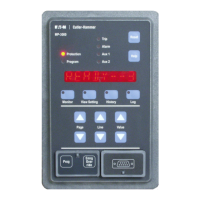
